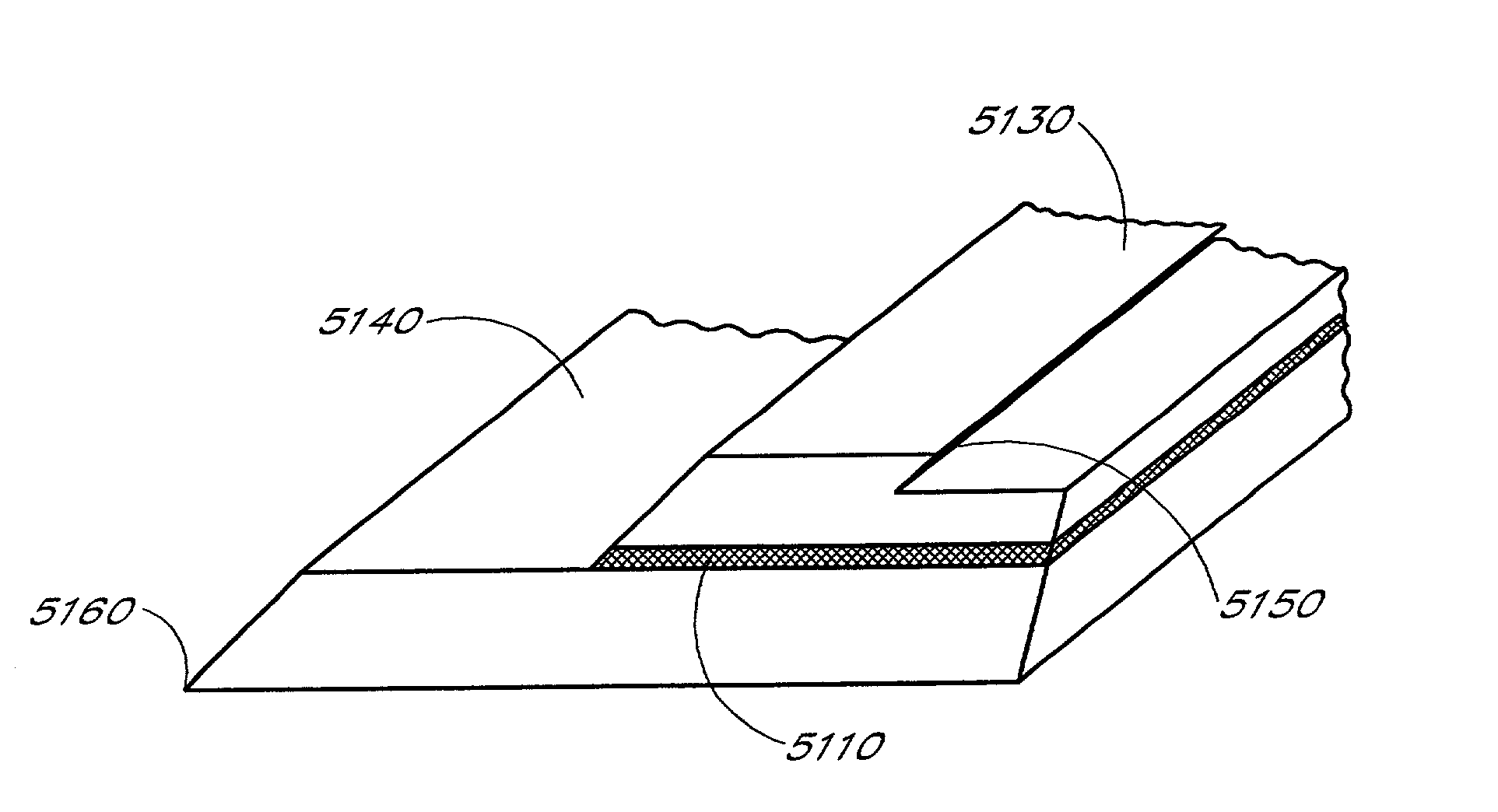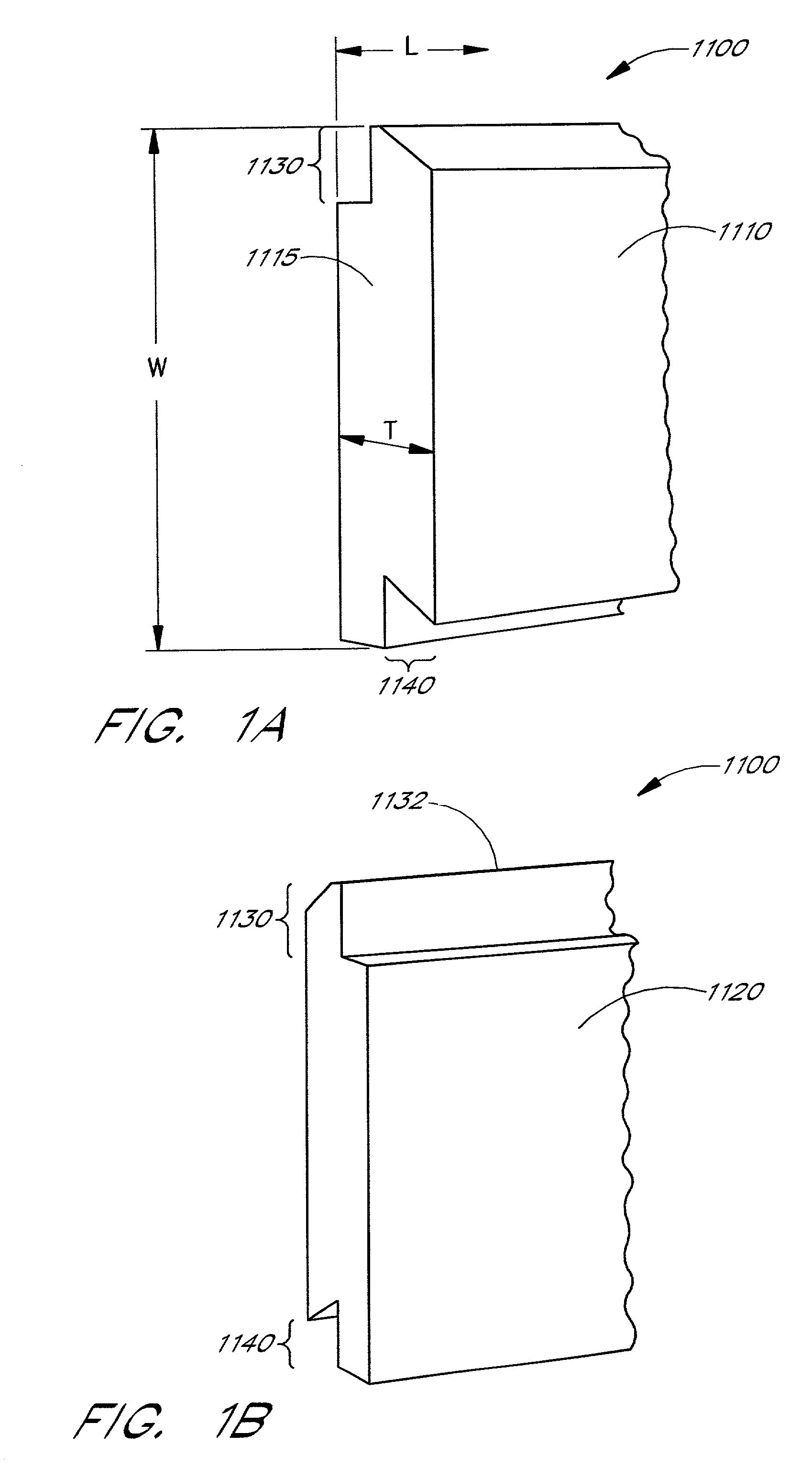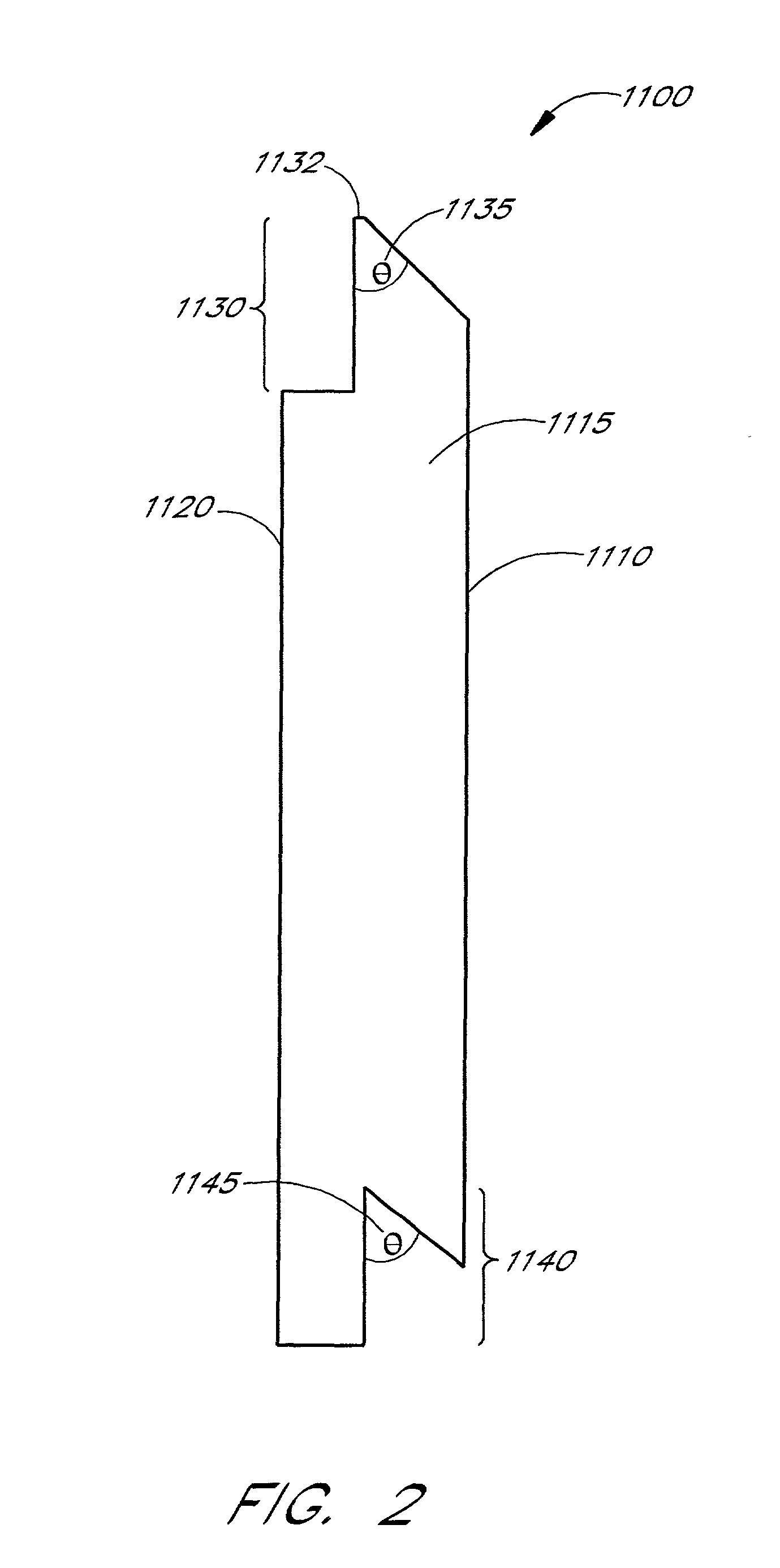Reinforced fiber cement article and methods of making and installing the same
a fiber cement and article technology, applied in the field of reinforced fiber cement articles, can solve the problems of high thermal expansion rate, low tensile strength of wood, and inability to meet the needs of use, and achieve the effects of improving the strength of fiber cement articles, improving the durability and handleability of thin pieces, and improving tensile strength
- Summary
- Abstract
- Description
- Claims
- Application Information
AI Technical Summary
Benefits of technology
Problems solved by technology
Method used
Image
Examples
Embodiment Construction
[0110]Certain preferred embodiments of the invention generally relate to lightweight siding plank assemblies that are structured to secure the siding planks against lateral forces without face nailing and to create a uniform and deep shadow line. In some of these embodiments, the shape of the plank is achieved by adding a second material to a base plank to add function and / or aesthetics, such as a thick bottom edge and / or interlock. These and other features and functionality of the preferred embodiments are described in detail below.
[0111]Unlike other siding materials, fiber cement (“FC”) materials have preferred qualities of non-combustibility, strength, and durability. Low-density FC has additional advantages over higher density FC because the material is more easily machined, and its decreased weight facilitates handling and installation. Manufacture of siding planks made of low-density and medium-density FC material, as described in Australian Patent No. AU 515151 and U.S. Pat. ...
PUM
 Login to View More
Login to View More Abstract
Description
Claims
Application Information
 Login to View More
Login to View More - R&D
- Intellectual Property
- Life Sciences
- Materials
- Tech Scout
- Unparalleled Data Quality
- Higher Quality Content
- 60% Fewer Hallucinations
Browse by: Latest US Patents, China's latest patents, Technical Efficacy Thesaurus, Application Domain, Technology Topic, Popular Technical Reports.
© 2025 PatSnap. All rights reserved.Legal|Privacy policy|Modern Slavery Act Transparency Statement|Sitemap|About US| Contact US: help@patsnap.com



